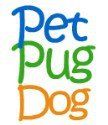Pug Dog Elongated Soft Palate
You are here: Pug Dog Health main page > > > Pug Dog Brachycephalic Airway Obstructive Syndrome >>> Pug Dog Elongated Soft Palate
Overview
This is a condition seen with Pugs involving the palate which is a flap of tissue located at the back of the throat. Because Pugs have compressed internal passages, the palate is often too large, comparatively speaking, and therefore partially blocks the entrance to the trachea (windpipe). This means that as a Pug inhales and exhales, the air cannot flow freely as it would otherwise.
Occurrence Rate
25+% of Pugs have elongated palate to some extent, though the number that have this severe enough to warrant veterinary intervention is much lower.
Age of Onset
Elongated soft palate is a congenital issue, meaning that it is present at birth and symptoms may not always be noticeable right away but may worsen over a number of years as a Pug matures.
Symptoms
Treatment, Surgical
Overview:
When elongated palate is severe enough that a Pug's breathing distress interferes with quality of life, surgery is recommended. And, when considering surgery, it is important to remember that this condition often worsens as a dog grows older, including the risk of ligaments in the larynx stretching to the point of collapse.
Though most veterinarians don’t want to wait too long, surgery is typically held off until at least the 1-year mark when at all possible. This is because if surgery is performed while a Pug is still growing, and therefore the palate is also still growing in size, the procedure may need to be repeated in the future.
Surgical correction involves shortening the palate, and for some dogs, tonsils will be removed at the same time. Laser surgery is the most common method to do this; it cauterizes as it cuts, which keeps bleeding and inflammation to a minimum and shortens recovery time over other methods.
Prognosis:
Prognosis for Pugs have surgery for elongated soft palate varies depending on the extent of the condition. Those with moderate cases have the best chance of successful treatment and those with very extensive cases may have a poor prognosis.
Recovery:
Pain and swelling are most severe the first few days and then gets gradually better. A dog will be put on a soft-food diet such as rice or sweet potato with minced pieces of chicken for at least two weeks. Anti-inflammatory medication and antibiotics will be given and pain medication will be given as needed. Healing time varies but typically is between 2 to 3 weeks.
Note:
If a Pug has both stenotic nares
and elongated soft palate and these conditions are severe enough to cause difficulty breathing, surgery is almost always the answer.
Did you find this article to be helpful?
If so, you'll appreciate having PetPugDog's GIANT Book of Pug Care which is available as both a hard copy (8.5 x 11" soft cover) and ebook (PDF).
Stay Informed:
Become a free PetPugDog Member
- Receive reminders when we add new pages of information. You'll also be able to suggest a topic for us to write about; we always look to Member suggestions.
Other helpful articles:
Pug Dog Grooming
- An overview of every grooming task that needs to be done to keep a Pug clean and well-groomed.
Pug Separation Anxiety
- Ways to help a Pug cope better, stay occupied, and be more relaxed when home alone.
Taking Care of a Pug's Teeth
- It's very important to keep your Pug's teeth clean and free of plaque. This can usually be accomplished at home if these tasks are done on time.
Pug Wrinkle Care
- The facial folds of this breed need to be kept clean and dry or yeast infections can develop. Read how to care for the wrinkles and treat possible issues.

